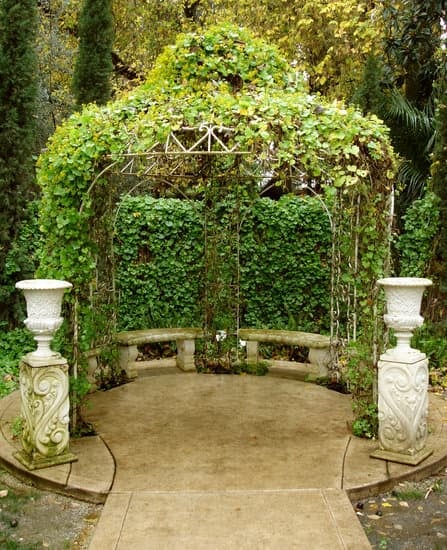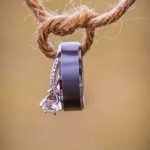When it comes to planning a wedding, every detail matters, including the proper etiquette for wedding invitations. One common question that arises is whether or not to seal the inner envelope of a wedding invitation. Understanding the significance of wedding invitation etiquette and traditions can help couples make informed decisions about their invitations.
The inner envelope of a wedding invitation serves a specific purpose in traditional wedding invitation etiquette. It not only holds all the components of the wedding invitation suite but also adds an extra layer of formality and elegance to the presentation. In this article, we will explore the importance of following proper wedding invitation etiquette, including sealing the inner envelope, and how it contributes to setting the tone for the wedding celebration.
As couples navigate through different decisions in planning their special day, it is important to understand how each aspect contributes to creating a cohesive and thoughtful experience for their guests. The tradition of sealing inner envelopes has been upheld for generations, but with modern trends and practical considerations in mind, there may be room for alternatives that still adhere to proper etiquette.
Let’s delve into the world of wedding invitation etiquette and discover whether or not you should seal the inner envelope of a wedding invitation.
The Purpose of Inner Envelopes in Wedding Invitations
One of the most common questions that arise when it comes to inner envelopes is whether or not they should be sealed. According to traditional wedding invitation etiquette, inner envelopes were not sealed.
This allowed for easy access to the contents inside and also provided an opportunity for the sender to add a personal touch, such as including a hand-written note or extra sentiment. However, modern trends and practicality have shifted this tradition, leading many couples to opt for sealing their inner envelopes.
Sealing the inner envelope has become more popular in recent years due to several benefits. Not only does it provide an added layer of protection for the contents inside, but it also adds a sense of elegance and formality to the overall presentation of the invitation. Additionally, sealing the inner envelope can help prevent any potential shifting or movement of the invitation suite during transit, ensuring that it arrives at its destination in pristine condition.
| Purpose | Benefits |
|---|---|
| Maintains formality and tradition | Added layer of protection |
| Protects contents inside | Elegance and formality |
| Adds a personal touch | Prevents shifting or movement during transit |
Do You Seal the Inner Envelope of a Wedding Invitation
When it comes to wedding invitation etiquette, there are many traditions and customs that couples may choose to follow. One common question that arises is whether or not to seal the inner envelope of a wedding invitation. The answer to this question ultimately depends on personal preference and the level of formality the couple wishes to maintain for their wedding.
Traditionally, the inner envelope of a wedding invitation was left unsealed. This allowed for the invitation to be easily removed from the inner envelope without causing any damage. However, in modern times, many couples choose to seal the inner envelope as a way to add an extra touch of elegance and formality to their invitations.
Sealing the inner envelope of a wedding invitation can also help ensure that all of the enclosures within the invitation stay neatly organized and in place. This can be especially helpful if the invitations are being mailed out or hand-delivered, as it reduces the risk of pieces shifting around or falling out during transit.
| Aspect | Information |
|---|---|
| Traditional practice | The inner envelope was traditionally left unsealed |
| Modern practice | Many couples now choose to seal the inner envelope for added elegance |
| Practicality | Sealing the inner envelope helps keep all enclosures neatly organized and in place |
Benefits of Sealing the Inner Envelope
When it comes to wedding invitation etiquette, sealing the inner envelope serves several important purposes. Not only does it add a touch of elegance to the overall presentation, but it also helps protect the contents of the inner envelope and ensures that they remain secure during transit. In addition, sealing the inner envelope is a traditional and courteous gesture that shows your guests how much you value their presence at your special day.
Enhances Presentation
Sealing the inner envelope adds an extra layer of sophistication to your wedding invitations. It gives off an air of formality and attention to detail, which sets the tone for your upcoming nuptials. Whether you choose to use traditional wax seals, elegant stickers, or personalized monograms, sealing the inner envelope creates a visually stunning presentation that will impress your guests from the moment they receive their invitation.
Secures Contents
Sealing the inner envelope ensures that all pieces of the invitation suite remain intact and in place during mailing. This is particularly important if you are including additional items such as RSVP cards, reception details, or accommodation information within the inner envelope. By sealing it securely, you can be confident that everything will arrive at its destination just as you intended.
Shows Thoughtfulness
In addition to enhancing the overall presentation and ensuring the security of your invitation contents, sealing the inner envelope is also a thoughtful gesture toward your guests. It demonstrates that you have put time and effort into every aspect of their experience with your wedding, from receiving the invitation to attending the event itself. It shows that you value their presence and want to make sure every detail is perfect for them.
Alternatives to Sealing the Inner Envelope
When it comes to wedding invitation etiquette, the inner envelope plays a crucial role in not only protecting the contents of the invitation but also adding a touch of elegance and formality to the overall presentation. Traditionally, inner envelopes were used to indicate who specifically was invited to the wedding, as well as to protect the pristine condition of the invitation itself.
While there is much debate on whether or not to seal the inner envelope, there are several alternatives that couples can consider when preparing their wedding invitations.
Here are some alternatives to sealing the inner envelope:
- Use a decorative sticker: Instead of sealing the inner envelope with traditional adhesive, consider using a decorative sticker that matches your wedding theme or colors. This adds a personal and stylish touch to the invitation while still keeping everything secure inside.
- Tie it with ribbon: Another option is to tie the inner envelope with a small piece of ribbon or twine. This not only keeps everything in place but also adds a romantic and whimsical flair to the presentation.
- Wax seal: For couples looking for an extra element of sophistication, using a wax seal on the outermost part of the inner envelope can elevate the entire look. This vintage-inspired method not only secures everything inside but also adds a sense of old-world charm.
Ultimately, whether you choose to seal the inner envelope or opt for one of these alternatives, what matters most is that your wedding invitations reflect your style and personality as a couple. The way you choose to present your invitations should be a reflection of your love and excitement for this special day.
Practical Tips for Sealing Inner Envelopes
When it comes to sealing the inner envelope of a wedding invitation, there are traditional etiquette guidelines and practical tips to consider. The inner envelope serves to protect the contents of the invitation suite and adds an extra layer of formality to the wedding invitation. While there is no strict rule on whether or not to seal the inner envelope, following proper etiquette can enhance the overall presentation of the invitation.
Here are some practical tips for sealing inner envelopes:
- Use a glue stick or double-sided tape: This is a clean and tidy way to seal the inner envelope without leaving any visible marks or residue.
- Avoid using wet adhesive: Licking envelopes can be unsanitary and may not provide a secure seal.
- Consider using wax seals: For a touch of elegance, some couples opt to use wax seals with their initials or a decorative design to seal the inner envelope.
These practical tips can help ensure that the inner envelope is sealed securely while maintaining a polished and elegant presentation. By taking care in how you seal the inner envelope, you can contribute to the overall impression of your wedding invitation suite.
In addition to sealing methods, it’s also important to consider addressing inner envelopes with proper etiquette. This includes using titles and full names when addressing recipients, as well as carefully arranging the names in a formal manner. Attention to detail in both sealing and addressing inner envelopes will help ensure that your wedding invitation exudes sophistication and thoughtfulness.
Addressing Inner Envelopes
When it comes to wedding invitation etiquette, addressing the inner envelopes is just as important as addressing the outer envelopes. The inner envelope is traditionally used to specify exactly who is invited to the wedding, especially when families or different groups of people are included. Properly addressing the inner envelopes not only ensures that your guests understand who exactly is being invited, but also adds a touch of formality and elegance to your wedding invitations.
Using Titles and Last Names
It is proper etiquette to use titles and last names when addressing the inner envelopes of a wedding invitation. This means using “Mr.” “Mrs.” “Ms.” or other appropriate titles before each guest’s last name. If children are invited, their names can be listed on the inner envelope underneath their parents’ names. For example, “Mr. and Mrs. Smith” would be listed first, followed by their children’s names below.
Being Specific With Plus-Ones
If you are allowing certain guests to bring a plus-one to your wedding, be sure to address the inner envelope accordingly. Instead of simply writing “and Guest,” it is more considerate and formal to find out the name of the guest and include it on the inner envelope as well.
Using Calligraphy or Handwriting
The outer envelope may have been printed with a formal font or calligraphy, but the inner envelope should always be handwritten for an added personal touch. In traditional wedding invitation etiquette, handwriting adds an element of warmth and thoughtfulness to the invitation suite that sets it apart from other mail that arrives in a similar manner.
By following these guidelines for addressing inner envelopes on your wedding invitations, you can ensure that your guests understand exactly who is being invited while also adding a touch of timeless elegance to your special day.
Conclusion
In conclusion, the inner envelope of a wedding invitation plays an important role in upholding traditional etiquette and adding a touch of elegance to the overall presentation. While the decision to seal the inner envelope is ultimately up to the preferences of the couple, there are significant benefits to doing so. Sealing the inner envelope helps protect the contents from slipping out during mailing and adds a sense of formality and anticipation when guests open their invitations.
For those who opt to seal their inner envelopes, there are various options available, from traditional wax seals to modern adhesive seals or stickers. This provides couples with the opportunity to express their personal style and add a unique finishing touch to their wedding invitations.
Overall, whether you choose to seal your wedding invitation’s inner envelopes or not, it’s essential to remember that addressing them with care and proper etiquette is equally important. Ultimately, the goal is for your wedding invitations to reflect the significance of the occasion, set the tone for your special day, and make your guests feel honored and excited to be part of your celebration.
By paying attention to these details and putting thought into every aspect of your wedding invitations, you can ensure they leave a lasting impression on everyone who receives them.
Frequently Asked Questions
Why Is There an Inner Envelope for Wedding Invitations?
The inner envelope for wedding invitations serves as an added layer of protection for the invitation suite, ensuring that it arrives in pristine condition to the intended recipient. It also provides a space for listing all invited guests’ names.
Do Seals Go on the Inner or Outer Envelope?
Seals traditionally go on the outer envelope of the wedding invitation. They are used to secure the envelope and add a decorative touch to the overall presentation of the invitation.
What Is the Inner Outer Envelope Etiquette?
The etiquette for inner and outer envelopes is to address the outer envelope with the full names and addresses of the recipients, while the inner envelope includes more personal titles or first names only when addressing family members or specific individuals. This helps clarify who exactly is invited to the wedding.

I have been involved in marriages for over 20 years helping couples and singles understand more about them.





